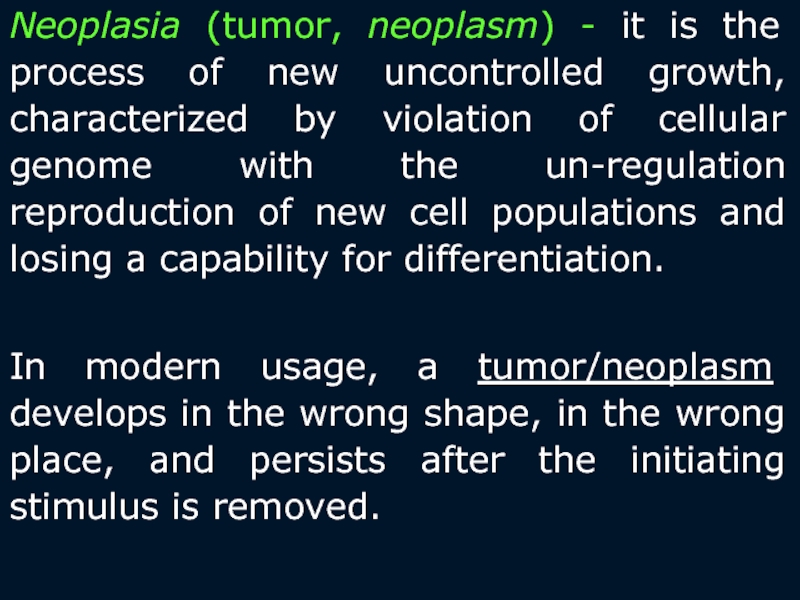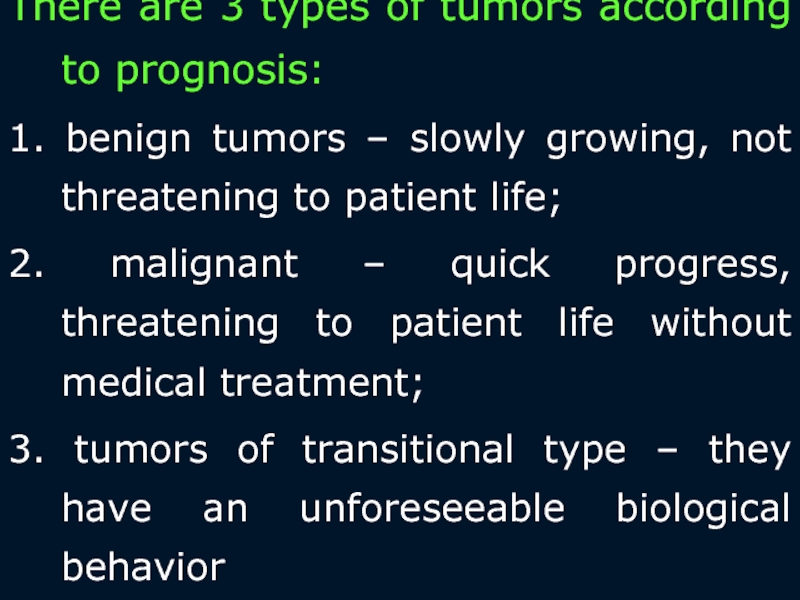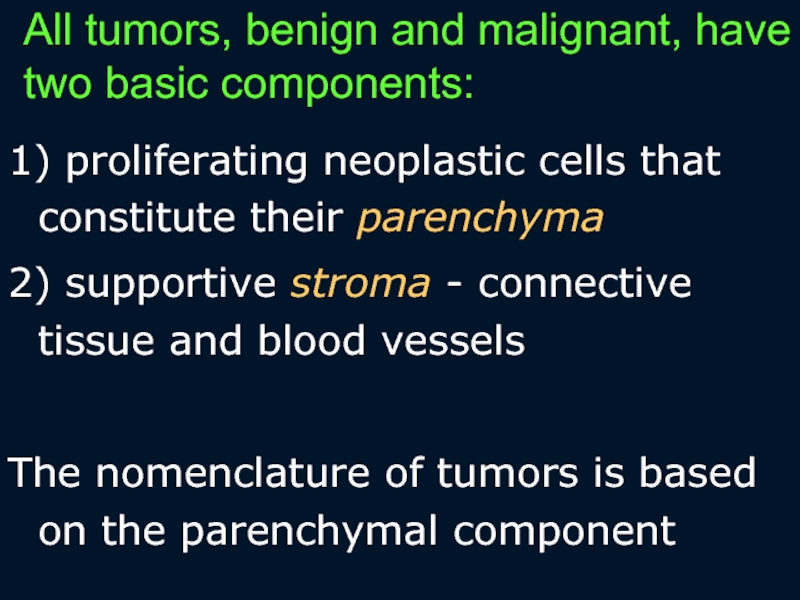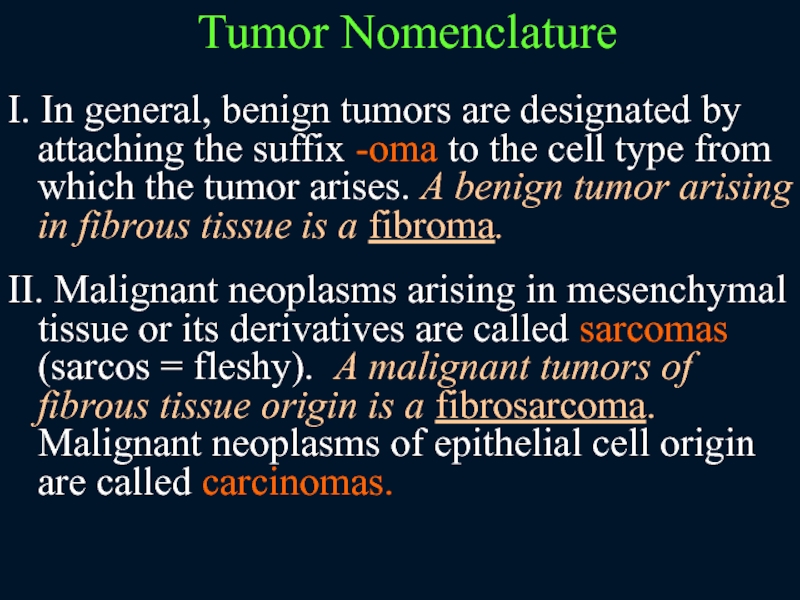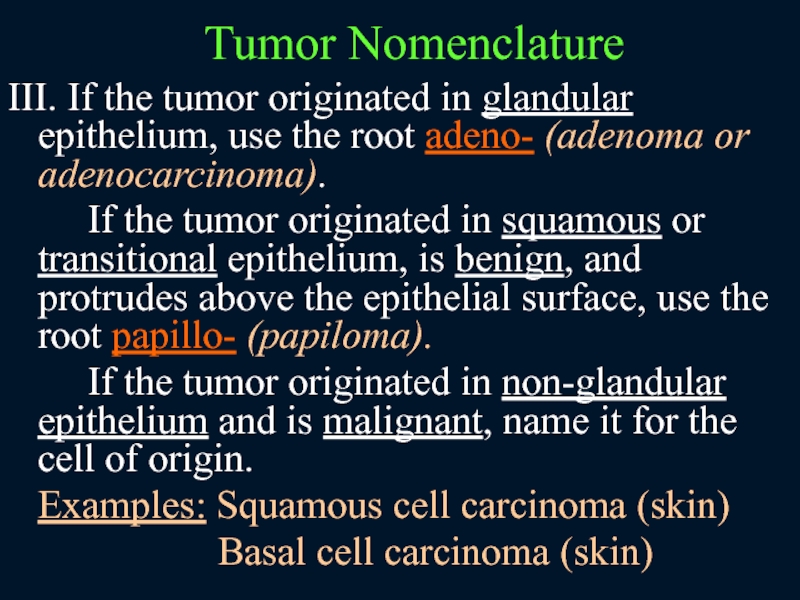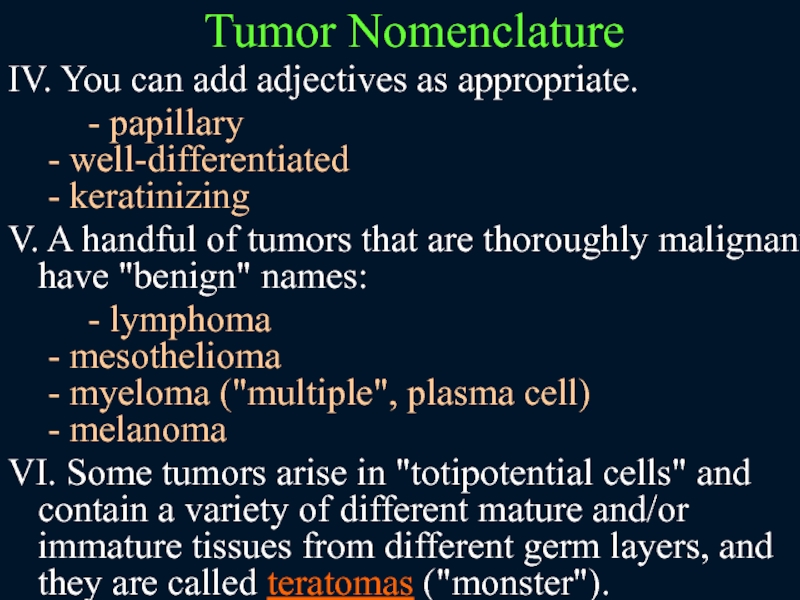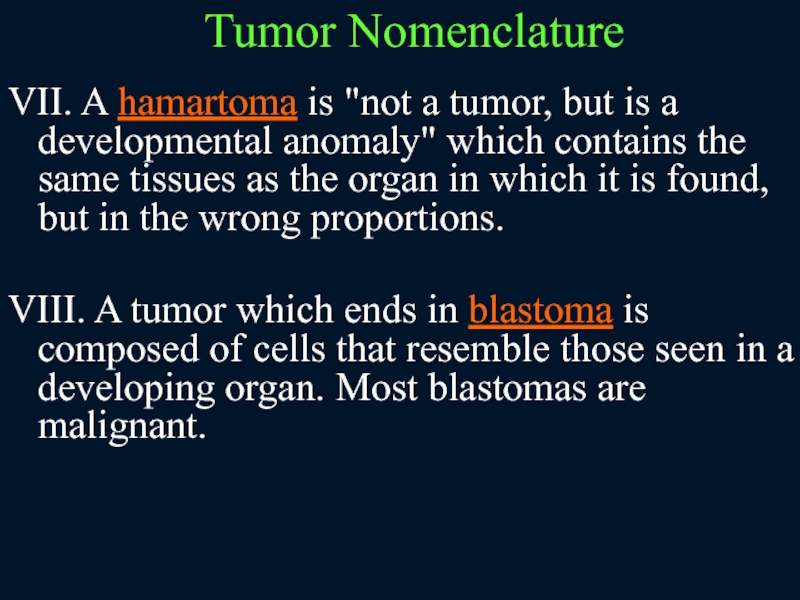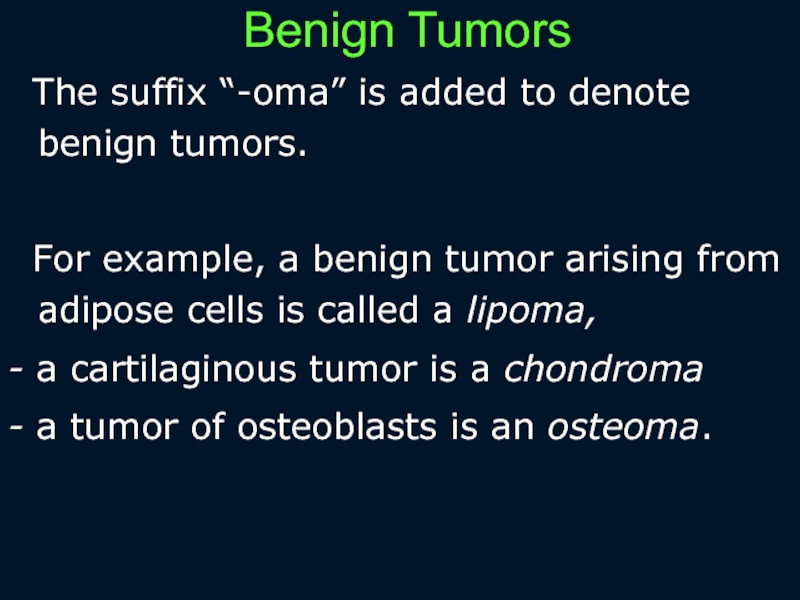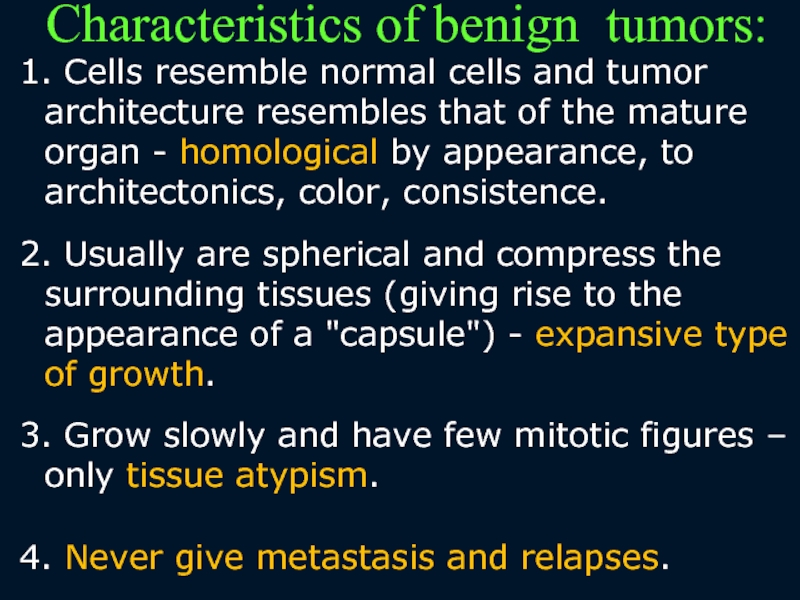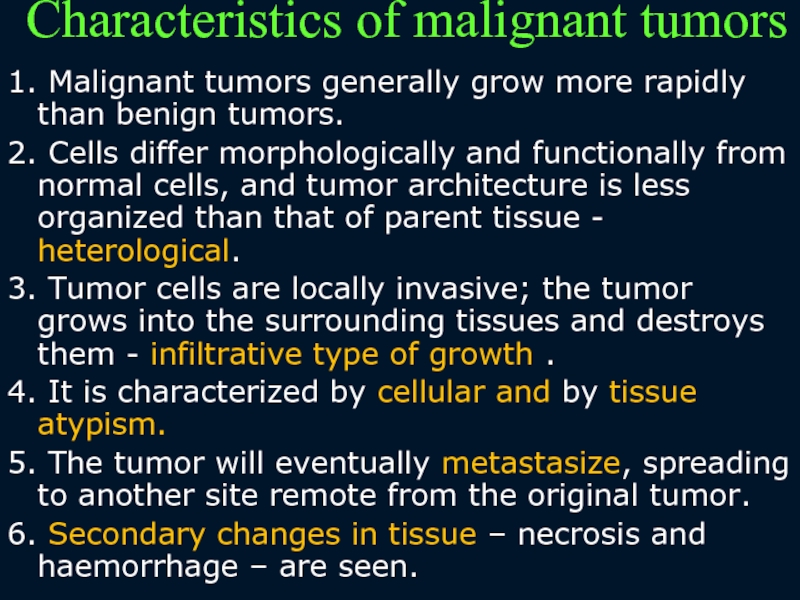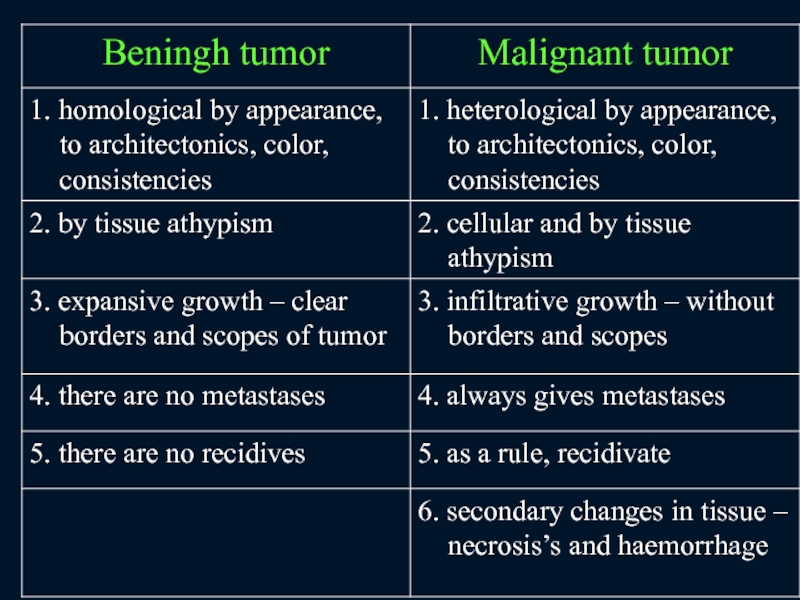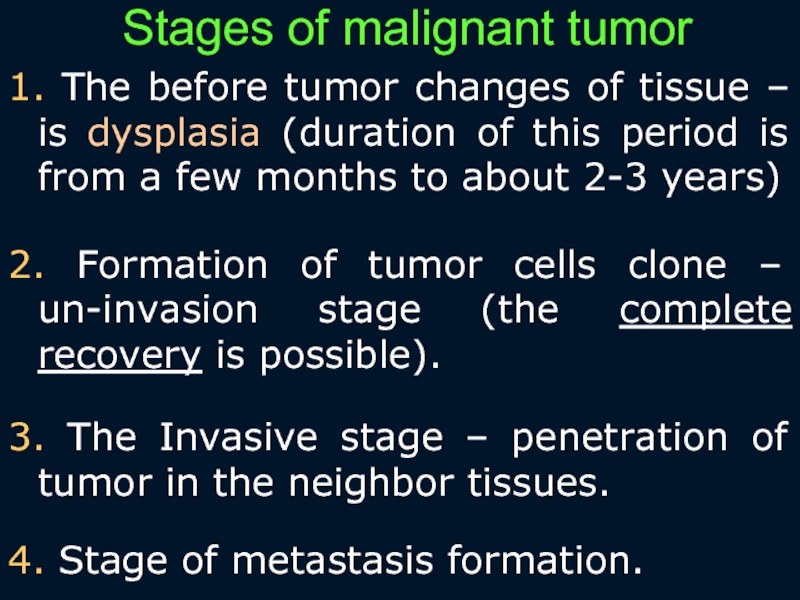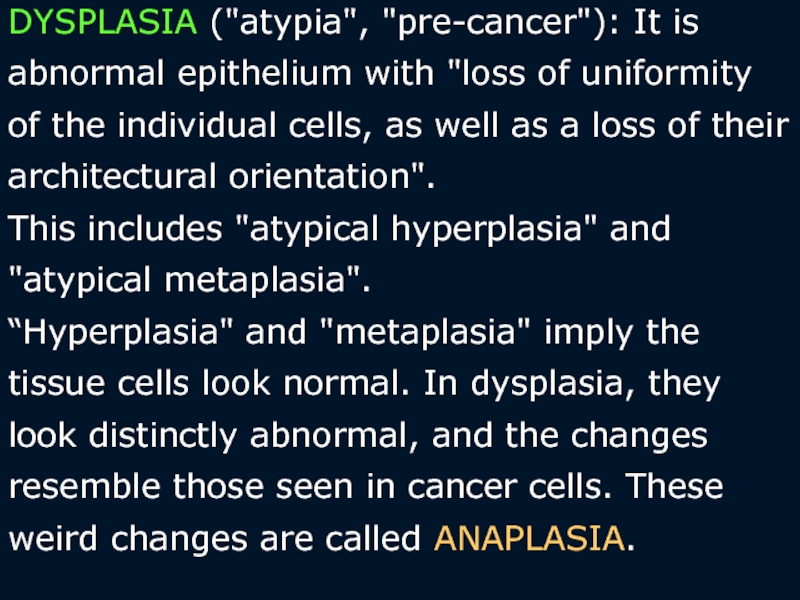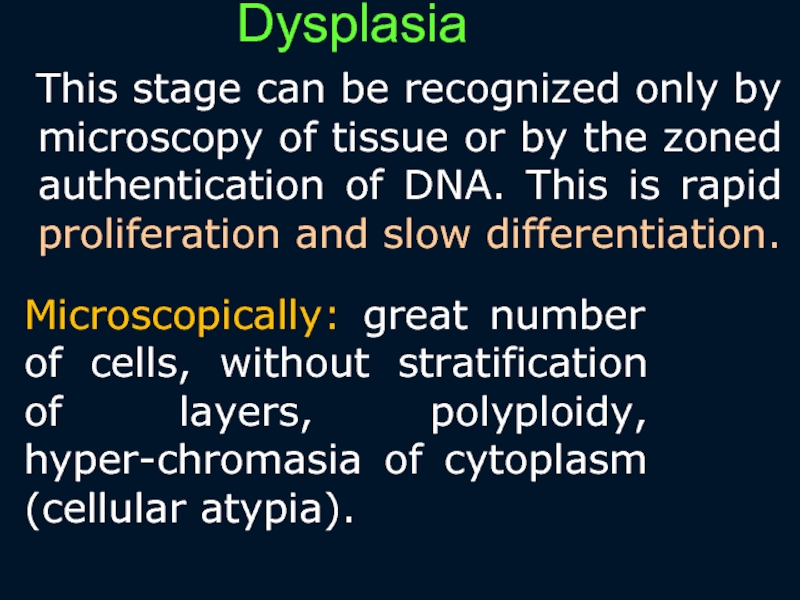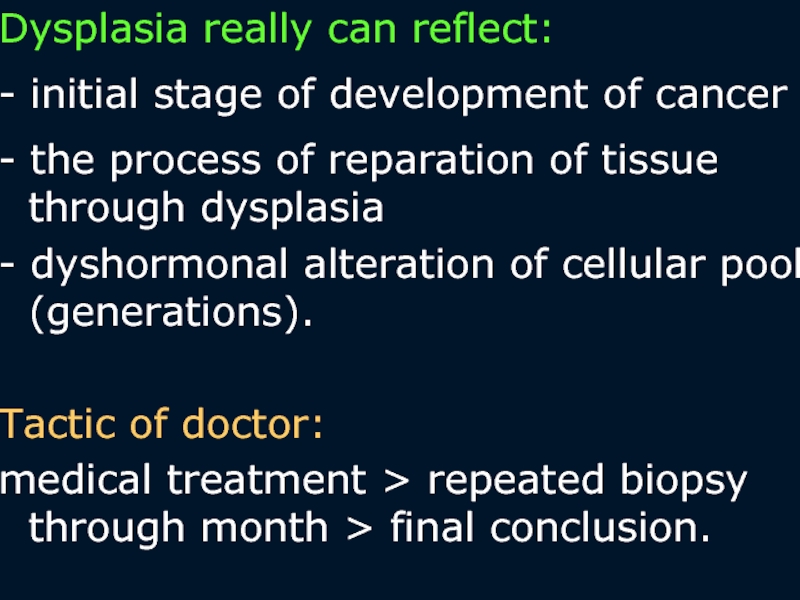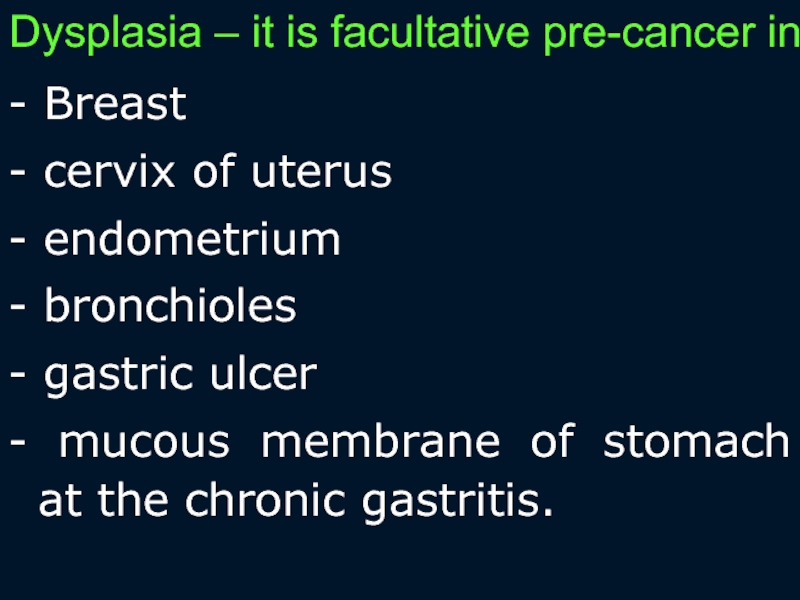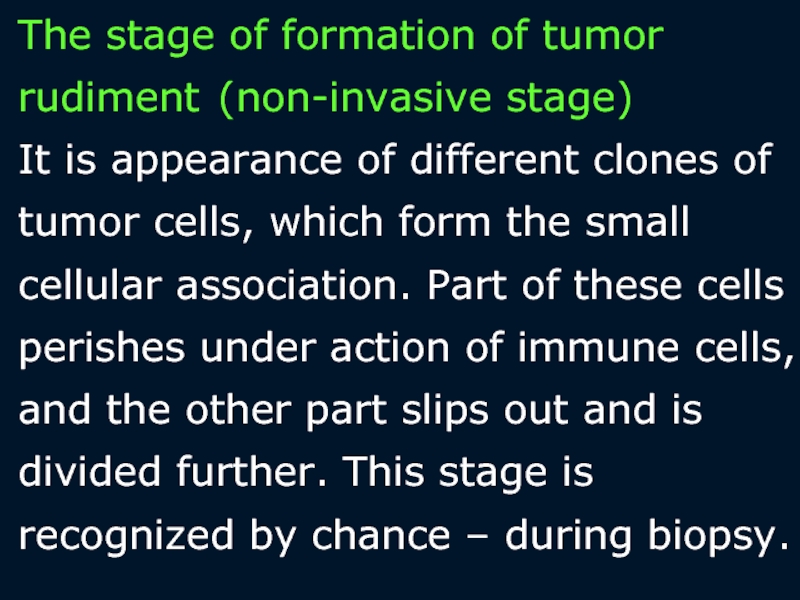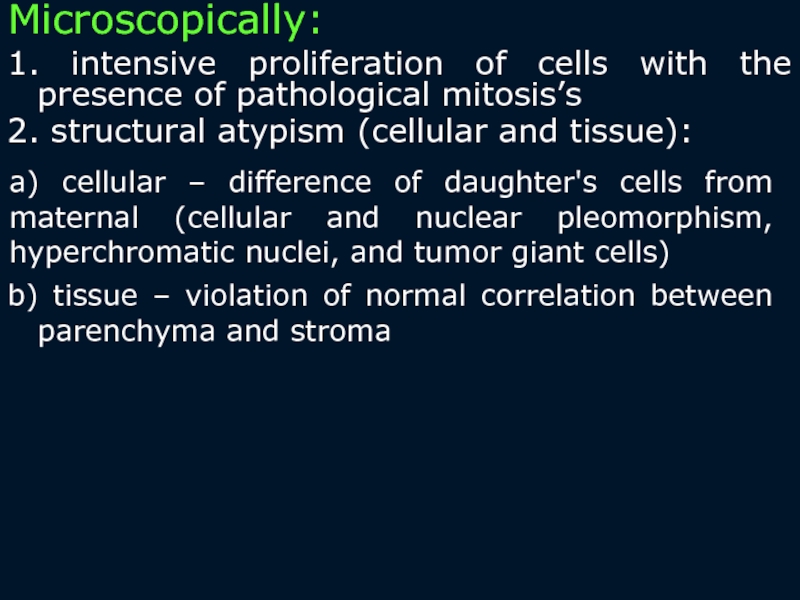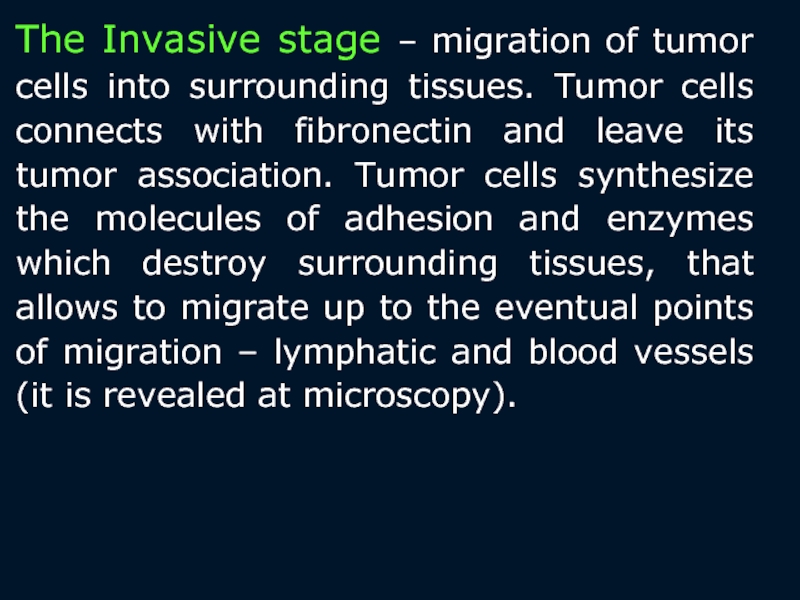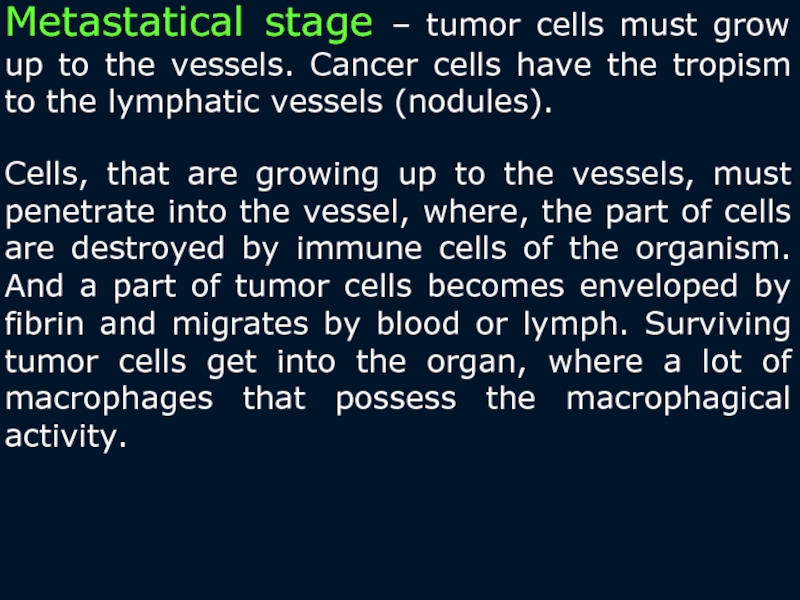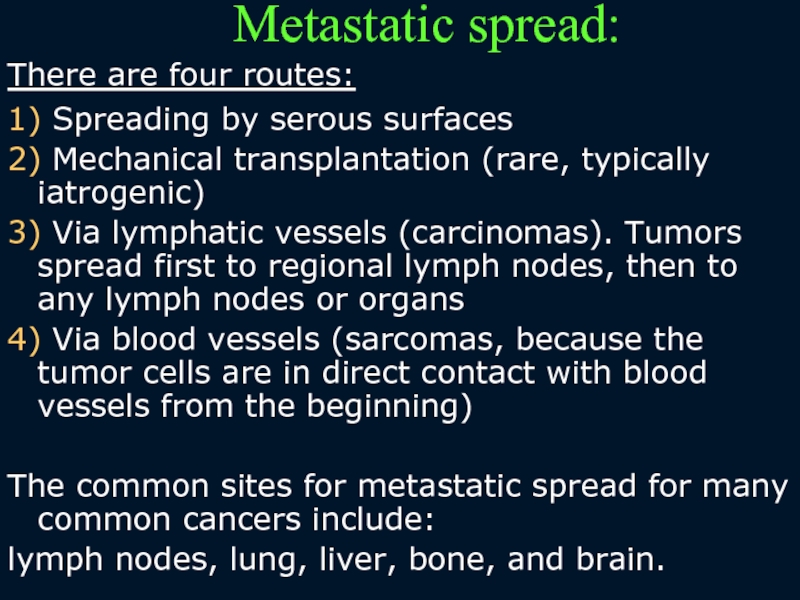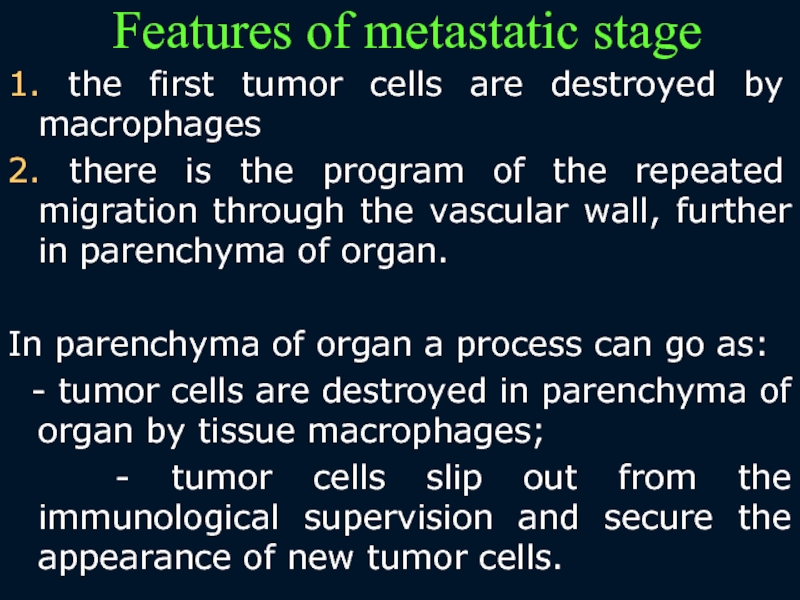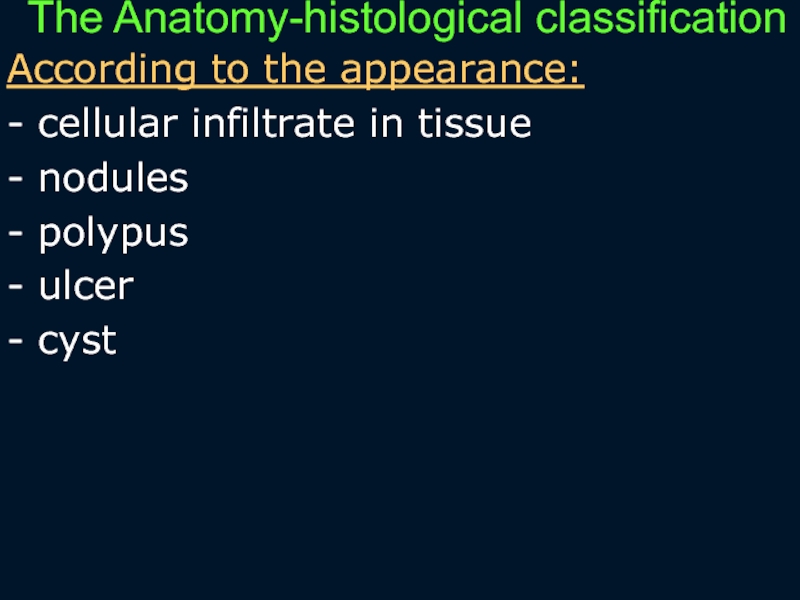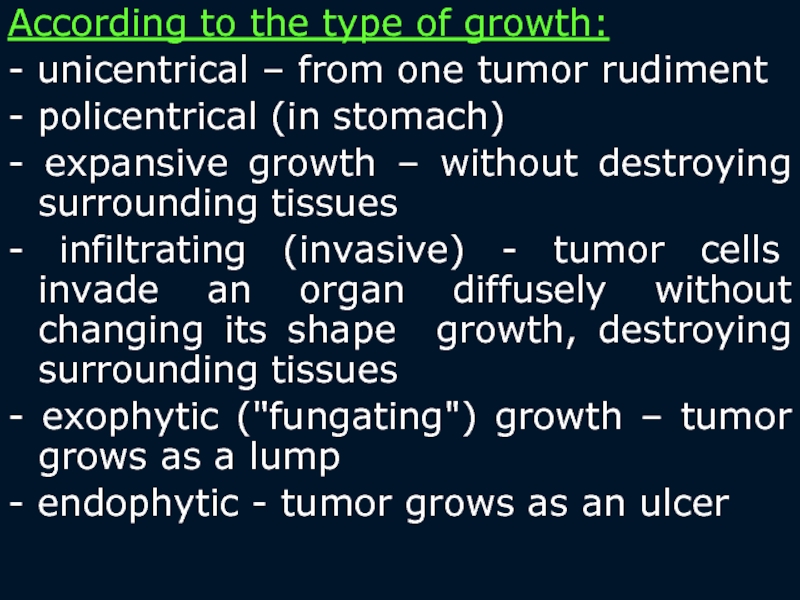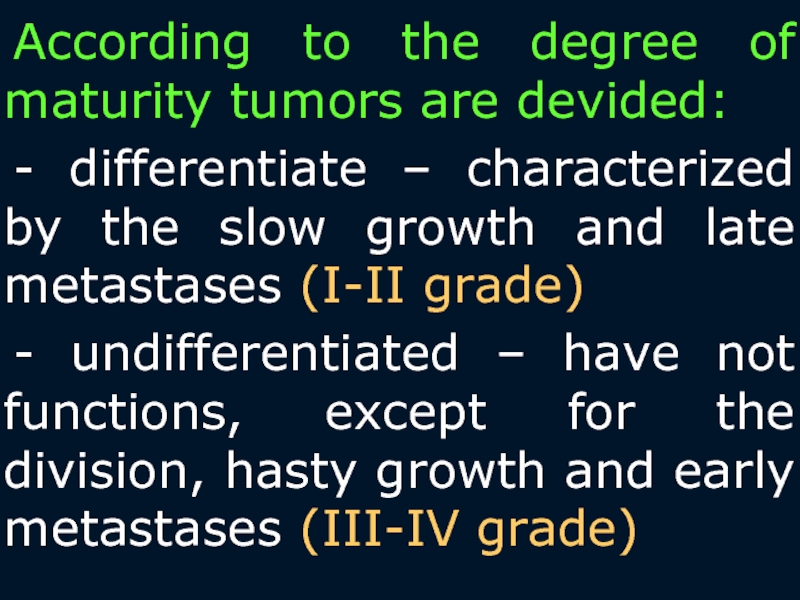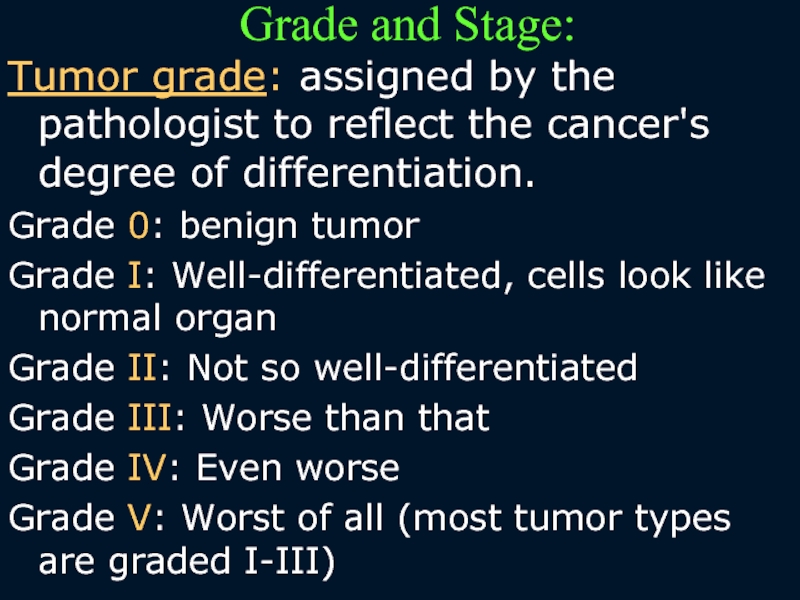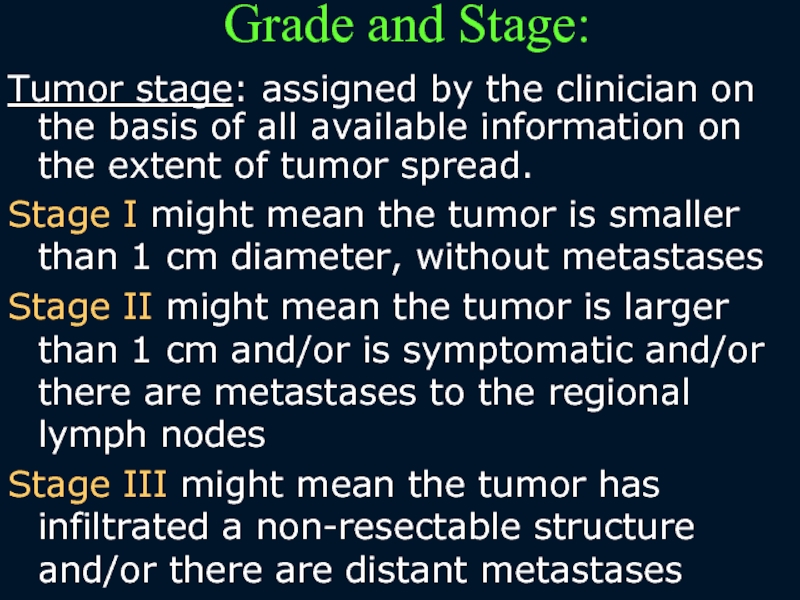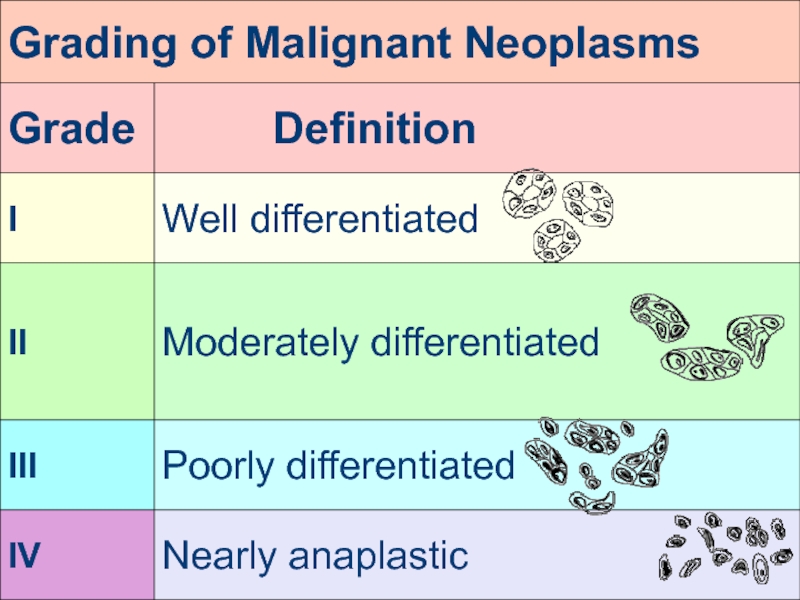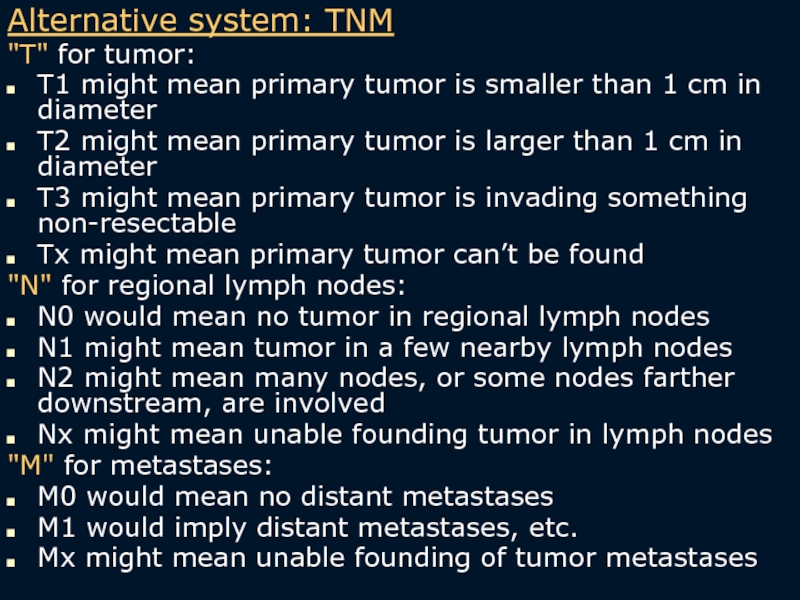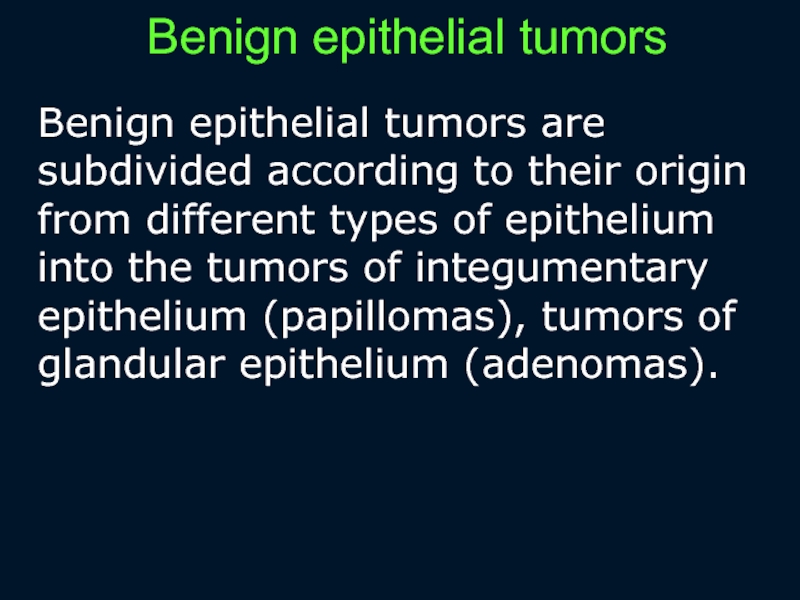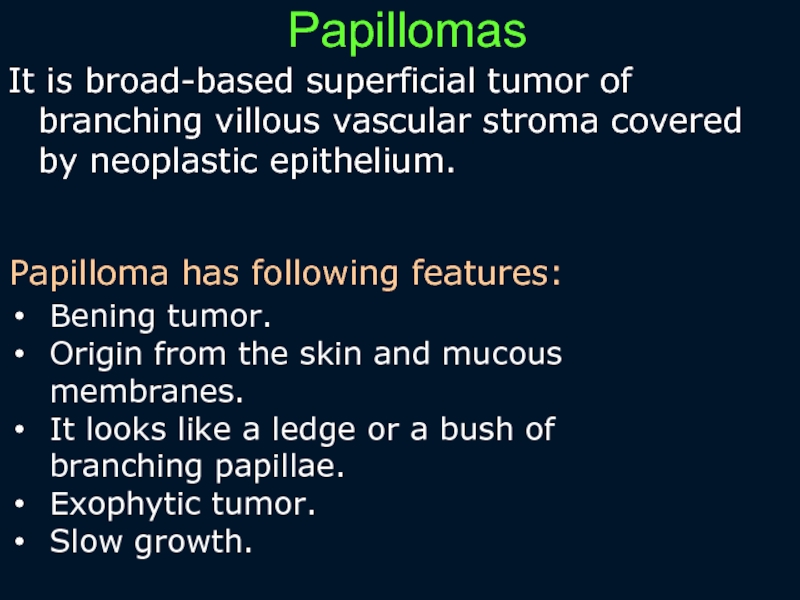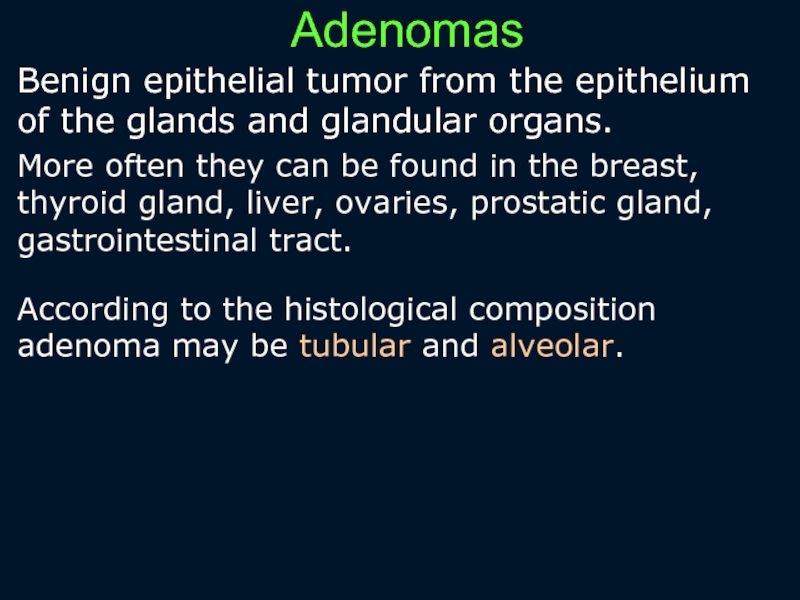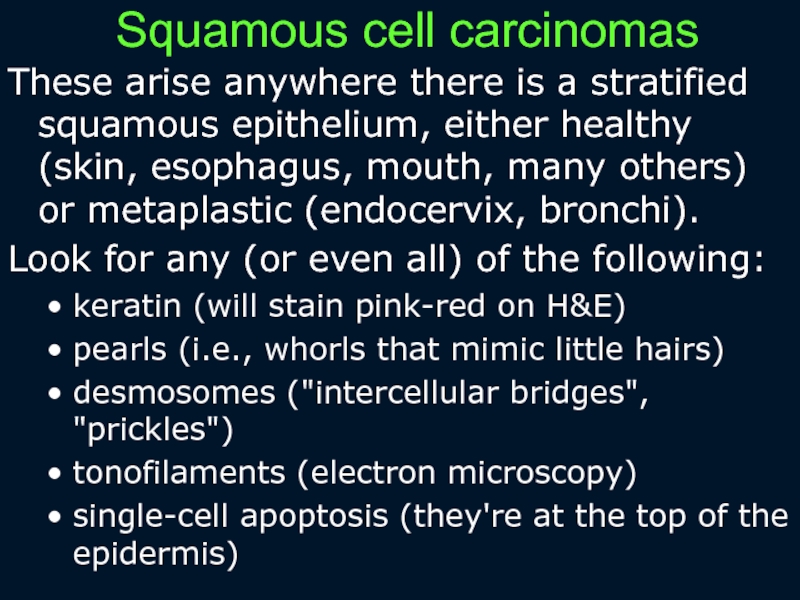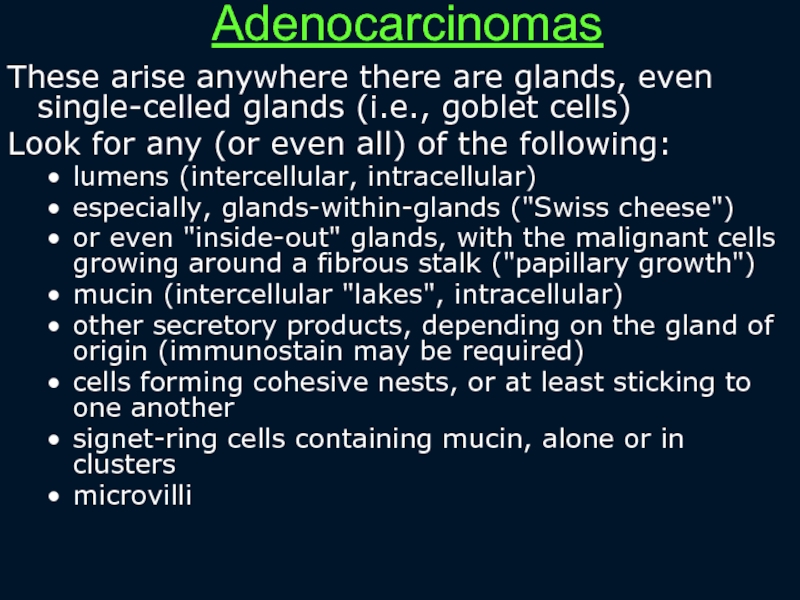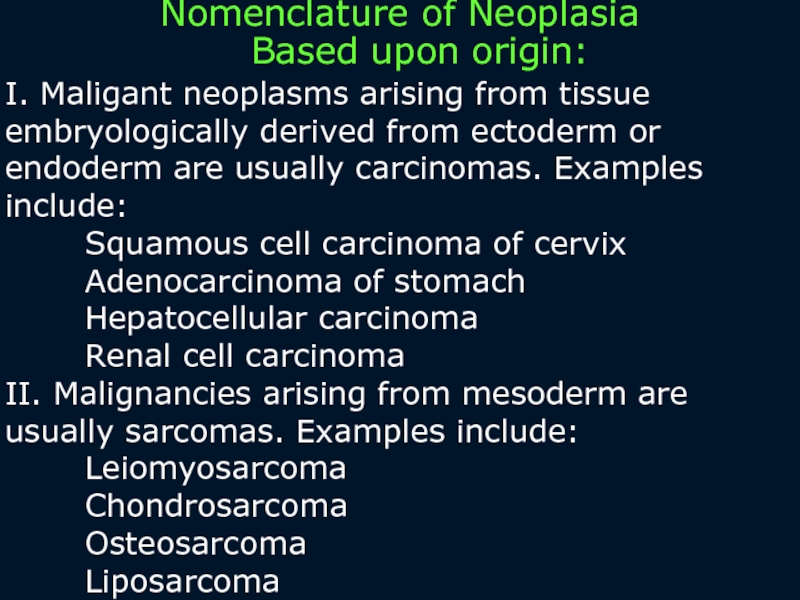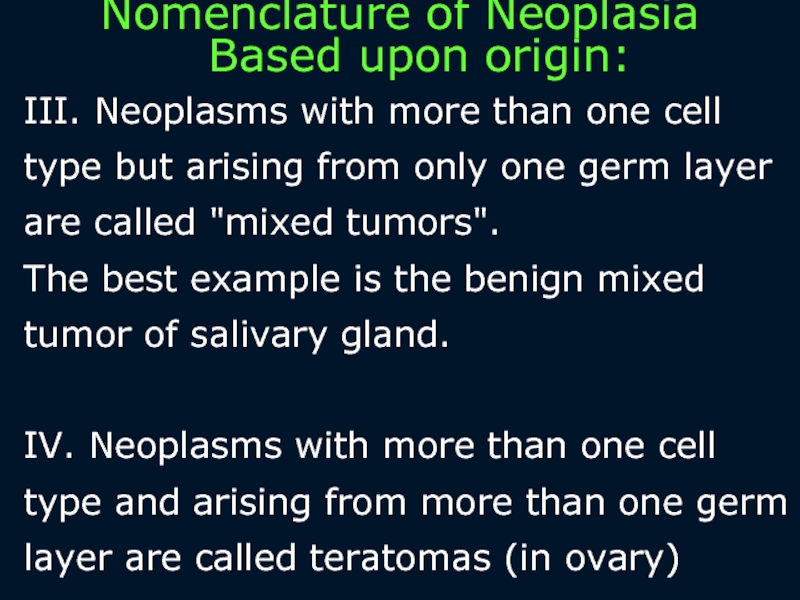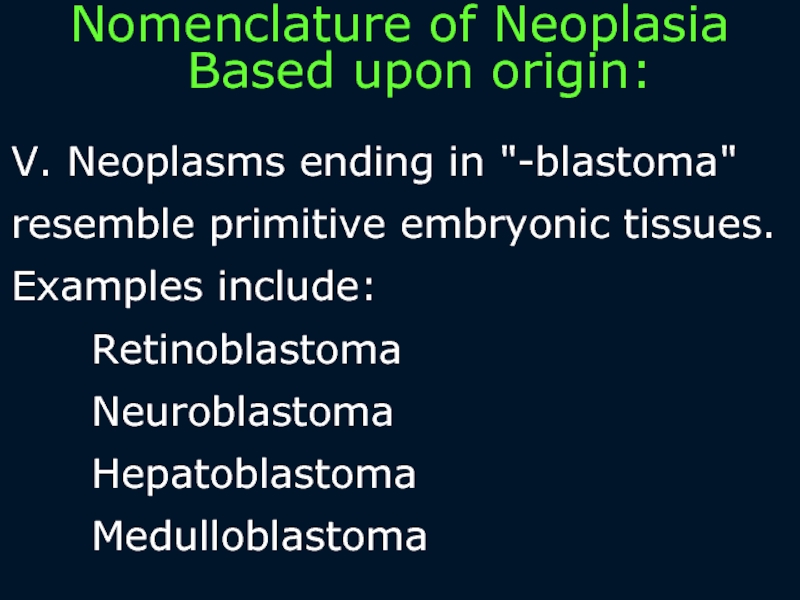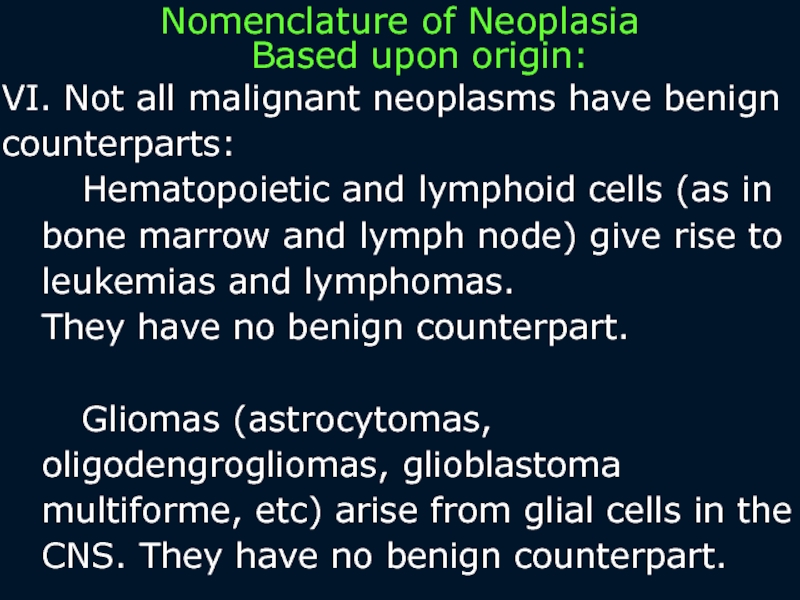ZAPOROZHZHIAN STATE MEDICAL UNIVERSITY
The department of pathological anatomy and forensic medicine with basis of low
- Главная
- Разное
- Дизайн
- Бизнес и предпринимательство
- Аналитика
- Образование
- Развлечения
- Красота и здоровье
- Финансы
- Государство
- Путешествия
- Спорт
- Недвижимость
- Армия
- Графика
- Культурология
- Еда и кулинария
- Лингвистика
- Английский язык
- Астрономия
- Алгебра
- Биология
- География
- Детские презентации
- Информатика
- История
- Литература
- Маркетинг
- Математика
- Медицина
- Менеджмент
- Музыка
- МХК
- Немецкий язык
- ОБЖ
- Обществознание
- Окружающий мир
- Педагогика
- Русский язык
- Технология
- Физика
- Философия
- Химия
- Шаблоны, картинки для презентаций
- Экология
- Экономика
- Юриспруденция
Introduction into morphology of tumors tumors from epithelium презентация
Содержание
- 1. Introduction into morphology of tumors tumors from epithelium
- 2. Neoplasia (tumor, neoplasm) - it is the
- 3. There are 3 types of tumors according
- 4. All tumors, benign and malignant, have two
- 5. I. In general, benign tumors are designated
- 6. III. If the tumor originated in glandular
- 7. IV. You can add adjectives as appropriate.
- 8. VII. A hamartoma is "not a
- 9. Benign Tumors The suffix “-oma” is
- 10. Characteristics of benign tumors: 1. Cells resemble
- 11. Characteristics of malignant tumors 1. Malignant
- 13. Stages of malignant tumor 1. The before
- 14. DYSPLASIA ("atypia", "pre-cancer"): It is abnormal epithelium
- 15. Dysplasia This stage can be recognized
- 16. Dysplasia really can reflect: - initial stage
- 17. Dysplasia – it is facultative pre-cancer in:
- 18. The stage of formation of tumor rudiment
- 19. Microscopically: 1. intensive proliferation of cells
- 20. The Invasive stage – migration of tumor
- 21. Metastatical stage – tumor cells must grow
- 22. Metastatic spread: There are four routes:
- 23. Features of metastatic stage 1. the first
- 24. The Anatomy-histological classification According to the
- 25. According to the type of growth: -
- 26. According to the degree of maturity tumors
- 27. Grade and Stage: Tumor grade:
- 28. Grade and Stage: Tumor stage: assigned by
- 30. Alternative system: TNM "T" for tumor:
- 31. Generally, tumors of high grade
- 32. Benign epithelial tumors Benign epithelial tumors are
- 33. Papillomas It is broad-based superficial tumor of
- 34. Adenomas Benign epithelial tumor from the epithelium
- 35. Squamous cell carcinomas These arise anywhere there
- 36. Adenocarcinomas These arise anywhere there are glands,
- 37. I. Maligant neoplasms arising from tissue embryologically
- 38. III. Neoplasms with more than one cell
- 39. V. Neoplasms ending in "-blastoma" resemble primitive
- 40. VI. Not all malignant neoplasms have benign
Слайд 1Introduction into morphology of tumors
Tumors from epithelium
Lecture on pathological
Слайд 2Neoplasia (tumor, neoplasm) - it is the process of new uncontrolled
In modern usage, a tumor/neoplasm develops in the wrong shape, in the wrong place, and persists after the initiating stimulus is removed.
Слайд 3There are 3 types of tumors according to prognosis:
1. benign tumors
2. malignant – quick progress, threatening to patient life without medical treatment;
3. tumors of transitional type – they have an unforeseeable biological behavior
Слайд 4All tumors, benign and malignant, have two basic components:
1) proliferating
2) supportive stroma - connective tissue and blood vessels
The nomenclature of tumors is based on the parenchymal component
Слайд 5I. In general, benign tumors are designated by attaching the suffix
II. Malignant neoplasms arising in mesenchymal tissue or its derivatives are called sarcomas (sarcos = fleshy). A malignant tumors of fibrous tissue origin is a fibrosarcoma. Malignant neoplasms of epithelial cell origin are called carcinomas.
Tumor Nomenclature
Слайд 6III. If the tumor originated in glandular epithelium, use the root
If the tumor originated in squamous or transitional epithelium, is benign, and protrudes above the epithelial surface, use the root papillo- (papiloma).
If the tumor originated in non-glandular epithelium and is malignant, name it for the cell of origin.
Examples: Squamous cell carcinoma (skin)
Basal cell carcinoma (skin)
Tumor Nomenclature
Слайд 7IV. You can add adjectives as appropriate.
- papillary
- well-differentiated
V. A handful of tumors that are thoroughly malignant have "benign" names:
- lymphoma - mesothelioma - myeloma ("multiple", plasma cell) - melanoma
VI. Some tumors arise in "totipotential cells" and contain a variety of different mature and/or immature tissues from different germ layers, and they are called teratomas ("monster").
Tumor Nomenclature
Слайд 8
VII. A hamartoma is "not a tumor, but is a developmental
VIII. A tumor which ends in blastoma is composed of cells that resemble those seen in a developing organ. Most blastomas are malignant.
Tumor Nomenclature
Слайд 9Benign Tumors
The suffix “-oma” is added to denote benign tumors.
For example, a benign tumor arising from adipose cells is called a lipoma,
- a cartilaginous tumor is a chondroma
- a tumor of osteoblasts is an osteoma.
Слайд 10Characteristics of benign tumors:
1. Cells resemble normal cells and tumor architecture
2. Usually are spherical and compress the surrounding tissues (giving rise to the appearance of a "capsule") - expansive type of growth.
3. Grow slowly and have few mitotic figures – only tissue atypism.
4. Never give metastasis and relapses.
Слайд 11Characteristics of malignant tumors
1. Malignant tumors generally grow more rapidly
2. Cells differ morphologically and functionally from normal cells, and tumor architecture is less organized than that of parent tissue - heterological.
3. Tumor cells are locally invasive; the tumor grows into the surrounding tissues and destroys them - infiltrative type of growth .
4. It is characterized by cellular and by tissue atypism.
5. The tumor will eventually metastasize, spreading to another site remote from the original tumor.
6. Secondary changes in tissue – necrosis and haemorrhage – are seen.
Слайд 13Stages of malignant tumor
1. The before tumor changes of tissue –
2. Formation of tumor cells clone – un-invasion stage (the complete recovery is possible).
3. The Invasive stage – penetration of tumor in the neighbor tissues.
4. Stage of metastasis formation.
Слайд 14DYSPLASIA ("atypia", "pre-cancer"): It is abnormal epithelium with "loss of uniformity
This includes "atypical hyperplasia" and "atypical metaplasia".
“Hyperplasia" and "metaplasia" imply the tissue cells look normal. In dysplasia, they look distinctly abnormal, and the changes resemble those seen in cancer cells. These weird changes are called ANAPLASIA.
Слайд 15Dysplasia
This stage can be recognized only by microscopy of tissue
Microscopically: great number of cells, without stratification of layers, polyploidy, hyper-chromasia of cytoplasm (cellular atypia).
Слайд 16Dysplasia really can reflect:
- initial stage of development of cancer
- the
- dyshormonal alteration of cellular pool (generations).
Tactic of doctor:
medical treatment > repeated biopsy through month > final conclusion.
Слайд 17Dysplasia – it is facultative pre-cancer in:
- Breаst
- cervix of uterus
-
- bronchioles
- gastric ulcer
- mucous membrane of stomach at the chronic gastritis.
Слайд 18The stage of formation of tumor rudiment (non-invasive stage) It is
Слайд 19Microscopically:
1. intensive proliferation of cells with the presence of pathological
2. structural atypism (cellular and tissue):
b) tissue – violation of normal correlation between parenchyma and stroma
a) cellular – difference of daughter's cells from maternal (cellular and nuclear pleomorphism, hyperchromatic nuclei, and tumor giant cells)
Слайд 20The Invasive stage – migration of tumor cells into surrounding tissues.
Слайд 21Metastatical stage – tumor cells must grow up to the vessels.
Cells, that are growing up to the vessels, must penetrate into the vessel, where, the part of cells are destroyed by immune cells of the organism. Аnd a part of tumor cells becomes enveloped by fibrin and migrates by blood or lymph. Surviving tumor cells get into the organ, where a lot of macrophages that possess the macrophagical activity.
Слайд 22Metastatic spread:
There are four routes:
1) Spreading by serous surfaces
2)
3) Via lymphatic vessels (carcinomas). Tumors spread first to regional lymph nodes, then to any lymph nodes or organs
4) Via blood vessels (sarcomas, because the tumor cells are in direct contact with blood vessels from the beginning)
The common sites for metastatic spread for many common cancers include:
lymph nodes, lung, liver, bone, and brain.
Слайд 23Features of metastatic stage
1. the first tumor cells are destroyed by
2. there is the program of the repeated migration through the vascular wall, further in parenchyma of organ.
In parenchyma of organ a process can go as:
- tumor cells are destroyed in parenchyma of organ by tissue macrophages;
- tumor cells slip out from the immunological supervision and secure the appearance of new tumor cells.
Слайд 24The Anatomy-histological classification
According to the appearance:
- cellular infiltrate in tissue
-
- polypus
- ulcer
- cyst
Слайд 25According to the type of growth:
- unicentrical – from one tumor
- policentrical (in stomach)
- expansive growth – without destroying surrounding tissues
- infiltrating (invasive) - tumor cells invade an organ diffusely without changing its shape growth, destroying surrounding tissues
- exophytic ("fungating") growth – tumor grows as a lump
- endophytic - tumor grows as an ulcer
Слайд 26 According to the degree of maturity tumors are devided:
- differentiate –
- undifferentiated – have not functions, except for the division, hasty growth and early metastases (III-IV grade)
Слайд 27Grade and Stage:
Tumor grade: assigned by the pathologist to reflect
Grade 0: benign tumor
Grade I: Well-differentiated, cells look like normal organ
Grade II: Not so well-differentiated
Grade III: Worse than that
Grade IV: Even worse
Grade V: Worst of all (most tumor types are graded I-III)
Слайд 28Grade and Stage:
Tumor stage: assigned by the clinician on the basis
Stage I might mean the tumor is smaller than 1 cm diameter, without metastases
Stage II might mean the tumor is larger than 1 cm and/or is symptomatic and/or there are metastases to the regional lymph nodes
Stage III might mean the tumor has infiltrated a non-resectable structure and/or there are distant metastases
Слайд 30Alternative system: TNM
"T" for tumor:
T1 might mean primary tumor
T2 might mean primary tumor is larger than 1 cm in diameter
T3 might mean primary tumor is invading something non-resectable
Tx might mean primary tumor can’t be found
"N" for regional lymph nodes:
N0 would mean no tumor in regional lymph nodes
N1 might mean tumor in a few nearby lymph nodes
N2 might mean many nodes, or some nodes farther downstream, are involved
Nx might mean unable founding tumor in lymph nodes
"M" for metastases:
M0 would mean no distant metastases
M1 would imply distant metastases, etc.
Mx might mean unable founding of tumor metastases
Слайд 31Generally, tumors of high grade present at high stage, while
Слайд 32Benign epithelial tumors
Benign epithelial tumors are subdivided according to their origin
Слайд 33Papillomas
It is broad-based superficial tumor of branching villous vascular stroma covered
Bening tumor.
Origin from the skin and mucous membranes.
It looks like a ledge or a bush of branching papillae.
Exophytic tumor.
Slow growth.
Papilloma has following features:
Слайд 34Adenomas
Benign epithelial tumor from the epithelium of the glands and glandular
More often they can be found in the breast, thyroid gland, liver, ovaries, prostatic gland, gastrointestinal tract.
According to the histological composition adenoma may be tubular and alveolar.
Слайд 35Squamous cell carcinomas
These arise anywhere there is a stratified squamous epithelium,
Look for any (or even all) of the following:
keratin (will stain pink-red on H&E)
pearls (i.e., whorls that mimic little hairs)
desmosomes ("intercellular bridges", "prickles")
tonofilaments (electron microscopy)
single-cell apoptosis (they're at the top of the epidermis)
Слайд 36Adenocarcinomas
These arise anywhere there are glands, even single-celled glands (i.e., goblet
Look for any (or even all) of the following:
lumens (intercellular, intracellular)
especially, glands-within-glands ("Swiss cheese")
or even "inside-out" glands, with the malignant cells growing around a fibrous stalk ("papillary growth")
mucin (intercellular "lakes", intracellular)
other secretory products, depending on the gland of origin (immunostain may be required)
cells forming cohesive nests, or at least sticking to one another
signet-ring cells containing mucin, alone or in clusters
microvilli
Слайд 37I. Maligant neoplasms arising from tissue embryologically derived from ectoderm or
Squamous cell carcinoma of cervix
Adenocarcinoma of stomach
Hepatocellular carcinoma
Renal cell carcinoma
II. Malignancies arising from mesoderm are usually sarcomas. Examples include:
Leiomyosarcoma
Chondrosarcoma
Osteosarcoma
Liposarcoma
Nomenclature of Neoplasia
Based upon origin:
Слайд 38III. Neoplasms with more than one cell type but arising from
The best example is the benign mixed tumor of salivary gland.
IV. Neoplasms with more than one cell type and arising from more than one germ layer are called teratomas (in ovary)
Nomenclature of Neoplasia
Based upon origin:
Слайд 39V. Neoplasms ending in "-blastoma" resemble primitive embryonic tissues.
Examples include:
Retinoblastoma
Neuroblastoma
Hepatoblastoma
Medulloblastoma
Nomenclature of Neoplasia
Based upon origin:
Слайд 40VI. Not all malignant neoplasms have benign counterparts:
Hematopoietic and lymphoid
They have no benign counterpart.
Gliomas (astrocytomas, oligodengrogliomas, glioblastoma multiforme, etc) arise from glial cells in the CNS. They have no benign counterpart.
Nomenclature of Neoplasia
Based upon origin:

